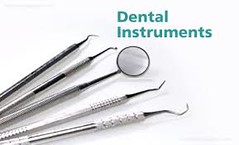 Sterilization is extremely important in health and medical fields. When patients go to the dentist, they, of course, want assurance that the equipment the dentist is using on them is clean and sterilized. Nobody wants to image the thought that the same equipment that’s being used in their own mouths has been used in the mouths of others without properly being sterilized. There are numerous tools designed to assist in the dental sterilization process, one of which is the autoclave.
Sterilization is extremely important in health and medical fields. When patients go to the dentist, they, of course, want assurance that the equipment the dentist is using on them is clean and sterilized. Nobody wants to image the thought that the same equipment that’s being used in their own mouths has been used in the mouths of others without properly being sterilized. There are numerous tools designed to assist in the dental sterilization process, one of which is the autoclave.
What is a Dental Autoclave?
A dental autoclave is essentially a pressure chamber into which dental equipment is placed to be sterilized. The way the autoclave works is by emitting steam that reaches extremely high temperatures as high as 270 degrees Fahrenheit to completely sterilize the instruments and equipment. While steam is commonly used in most dental autoclaves, there are certain types of autoclaves that utilize dry heat instead to eliminate the moisture from the process.
How Is It Used?
Dental instruments and equipment that needs to be sterilized is placed within the dental autoclave, and then the autoclave locks in place while the sterilization process is taking place. This is a safety measure that helps ensure no dentists or staff members can accidentally open the autoclave before the process is finished and get burned from the high temperature of steam. The autoclave only unlocks once the contents within it are thoroughly sterilized and dry. The amount of time the entire autoclave sterilization process takes depends upon the specific type of instruments and equipment being sterilized, but generally the process ranges anywhere from 6 to 30 minutes.
What Type of Instruments and Equipment is Sterilized with a Dental Autoclave?
 All critical and most semi-critical instruments are usually sterilized with a dental autoclave. Sometimes certain types of non-critical instruments are sterilized with the autoclave. Instruments that classify as critical ones are those that are used to penetrate the soft bone or tissue, come into contact with the bloodstream or are used to perform some other type of sterile usage. Forceps, scalpels, scalers, bone chisels and surgical burs are all examples of critical types of instruments that must be sterilized with a dental autoclave after each use.
All critical and most semi-critical instruments are usually sterilized with a dental autoclave. Sometimes certain types of non-critical instruments are sterilized with the autoclave. Instruments that classify as critical ones are those that are used to penetrate the soft bone or tissue, come into contact with the bloodstream or are used to perform some other type of sterile usage. Forceps, scalpels, scalers, bone chisels and surgical burs are all examples of critical types of instruments that must be sterilized with a dental autoclave after each use.
Semi-critical instruments, on the other hand, are those that don’t necessarily penetrate any bone or soft tissue but do come in contact with mucous membranes and other non-intact skin. Examples of semi-critical instruments include amalgam condensers, impression trays and mirrors. These types of instruments usually require sterilization via a dental autoclave as well.
Non-critical instruments are those that only come into contact with the skin and other external components of the body. Examples of these types of instruments include x-rays, pulse oximeters and blood pressure cuffs. These instruments have a relatively low risk of transmitting infection, so although they do require sterilization, they don’t require it to the extent that a dental autoclave provides.
References:
Nagai M, Takakuda K. “Influence of number of dental autoclave treatment cycles on rotational performance of commercially available air-turbine handpieces.” Retrieved on October 9, 2015, from http://www.ncbi.nlm.nih.gov/pubmed/16913570/.
The United States National Library of Medicine National Institutes of Health
8600 Rockville Pike,
Bethesda MD, 20894 USA
1-888-FIND-NLM
http://www.ncbi.nlm.nih.gov
Images:
https://farm9.staticflickr.com/8386/8620616411_0178ff3d51_m.jpg
https://farm6.staticflickr.com/5027/5609162665_f1552dd940_m.jpg